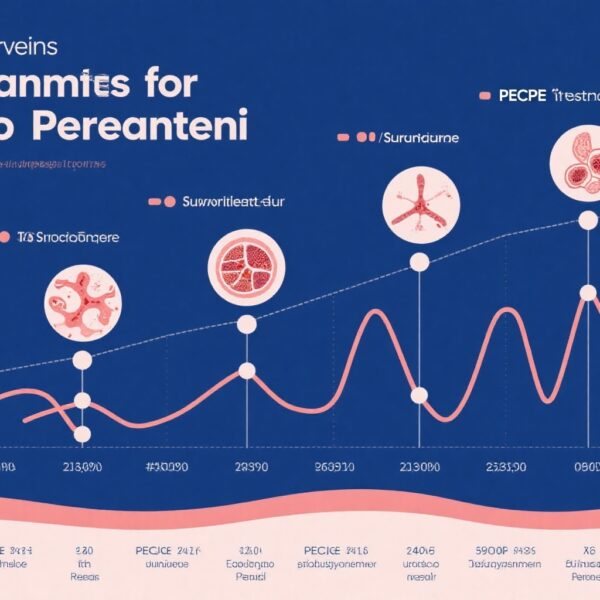Highlights
– A physiologic PK–PD model that includes CO2 kinetics and a ventilatory controller produced a fentanyl potency (C50) estimate for 50% ventilatory depression of 2.3 ± 0.5 ng/mL — roughly one-third of the potency estimated by simpler models.
– Modeling ventilation and end-tidal CO2 (ETCO2) simultaneously under closed-loop conditions yields parameter estimates that may be more pharmacologically plausible and clinically relevant than separate empirical models.
– The study provides median estimates for ventilatory controller gain (5.3 L·min−1·kPa−1), controller time constant (2.4 min), and a tissue volume parameter (6.1 L) that help translate fentanyl plasma concentrations into ventilatory outcomes.
Background
Opioid analgesics, including fentanyl, remain central to perioperative analgesia but are a leading cause of drug-induced ventilatory depression. Predicting opioid-induced ventilatory depression (OIVD) is challenging because respiratory control is subject to closed-loop regulation by CO2, and periprocedural co-administration of sedatives and anesthetics confounds isolated opioid effects. Accurate pharmacokinetic-pharmacodynamic (PK–PD) models of opioid respiratory effects are essential for dose selection, translational prediction, and the design of mitigation strategies in both research and clinical practice.
Study design
van Lemmen and colleagues conducted a population PK–PD study in 12 healthy volunteers to quantify fentanyl’s isolated effect on ventilatory control. Each subject received a sequence of five bolus doses mimicking clinical use (100 μg initially, then 75 μg at 30 and 60 minutes, and 50 μg at 90 and 120 minutes). The protocol included a sham (control) procedure and measurements of minute ventilation, end-tidal CO2 (ETCO2), and arterial fentanyl concentrations throughout dosing and for an additional hour after the last dose.
Three modeling strategies were compared:
- Ventilation-only empirical model (relating fentanyl concentration to minute ventilation).
- ETCO2-only empirical model (relating fentanyl concentration to ETCO2).
- Physiologic integrated model: simultaneous modeling of ventilation and ETCO2 that accounts for CO2 kinetics and closed-loop ventilation control, incorporating a ventilatory controller with defined gain and time constant and a tissue volume representing CO2 storage.
The primary hypothesis was that the physiologic model would provide the most reliable and pharmacologically realistic estimate of fentanyl potency for ventilatory depression.
Key findings
Primary pharmacodynamic outcome
The pivotal result was a marked difference in the estimated fentanyl potency parameter (C50, the steady-state plasma concentration producing 50% depression of ventilation) across models. The physiologic integrated model produced a median C50 of 2.3 ± 0.5 ng/mL, whereas the separate empirical ventilation and ETCO2 models yielded a pooled C50 of approximately 7.5 ± 1.3 ng/mL. In other words, the physiologic model estimated fentanyl to be roughly three times more potent in suppressing ventilation than estimated by simpler models.
Additional model parameters
Beyond potency, the physiologic model provided mechanistic parameters relevant to respiratory physiology. The ventilatory controller gain (sensitivity to changes in arterial CO2) was estimated at 5.3 ± 1.4 L·min−1·kPa−1. The controller time constant — a measure of how rapidly ventilation responds to changes in CO2 — was 2.4 ± 1.4 minutes. A tissue volume parameter representing the effective CO2 storage/kinetic compartment was estimated at 6.1 ± 1.2 L. The authors reported few other differences in shared parameters between the three models, suggesting that inclusion of CO2 kinetics and feedback primarily affected potency estimates.
Interpretation and clinical significance
The lower C50 from the physiologic model suggests prior empirical models that ignore closed-loop CO2 feedback will tend to underestimate opioid potency for ventilatory depression. This has two intertwined implications: (1) clinically, target plasma concentrations thought to be “safe” for ventilation may in fact be closer to the threshold for significant respiratory depression than previously believed; and (2) methodologically, modeling respiratory drug effects without accounting for the CO2–ventilation feedback loop risks biased PD parameter estimates.
Safety and tolerability
The article reports on ventilatory depression endpoints under controlled experimental conditions in healthy volunteers; specific adverse events and serious harms were not described in detail in the summary. The dosing regimen used is within ranges employed in perioperative practice but caution is warranted in extrapolating to patients with comorbidities, older age, or concomitant sedatives.
Expert commentary
Mechanistic plausibility: The physiologic model’s inclusion of CO2 kinetics and controller properties aligns with established respiratory physiology. Ventilatory drive is primarily regulated by arterial CO2 (PaCO2) through central and peripheral chemoreceptors; opioids blunt the controller’s responsiveness and setpoint, and the closed-loop interaction between ventilation and CO2 storage/clearance can produce counterintuitive dynamics. Accounting for these interactions therefore improves the mapping from plasma opioid concentration to ventilation.
Relevance for perioperative practice: In anesthesiology and critical care, practitioners frequently interpret ETCO2 and ventilation in the context of shifting vasoactive and sedative influences. The findings underscore that empirical concentration–response relationships derived without a physiologic framework may provide false reassurance about safety margins for opioids. The physiologic C50 of ~2.3 ng/mL may be a useful reference for simulation studies, dose-finding, and the development of clinical decision-support tools that aim to predict respiratory risk.
Limitations and generalizability: The study enrolled a small cohort of healthy volunteers, limiting direct extrapolation to surgical patients or those with respiratory disease, advanced age, obesity, or chronic opioid tolerance. The dosing regimen used repeated boluses; continuous infusion kinetics may interact differently with tissue compartments. Also, while the physiologic model integrates major determinants of CO2–ventilation coupling, models are simplifications and may omit modulatory influences such as sleep state, airway mechanics, chemoreceptor heterogeneity, and concurrent sedatives. Finally, the study’s exploratory and hypothesis-generating nature calls for external validation, ideally in larger and more diverse populations and under clinically realistic co-medication scenarios.
Comparison with prior literature: Prior PK–PD studies of opioid respiratory depression have documented variability in potency estimates across agents and populations. This study provides a conceptual advance by explicitly testing whether a physiologic closed-loop model changes potency estimates — and demonstrates that it does. Future work should assess whether physiologic modeling similarly alters potency estimates for other opioids and in patient cohorts with altered ventilatory control (e.g., COPD, OSA, chronic opioid therapy).
Practical implications and recommendations
For clinicians: Be mindful that opioid plasma concentrations that appear modest on empirical concentration–response curves may nevertheless confer substantial respiratory risk when closed-loop respiratory control and CO2 kinetics are considered. Vigilant monitoring of ventilation and ETCO2, conservative titration of opioids especially when combined with sedatives, and readiness to reverse or support ventilation remain essential.
For modelers and researchers: When modeling respiratory effects of centrally acting agents, incorporate physiologic feedback and CO2 kinetics where feasible. This approach improves parameter interpretability and translational value. Reporting controller gain, time constants, and tissue-volume analogues facilitates cross-study comparisons and physiologic simulations.
Conclusions
van Lemmen et al. provide evidence that a mechanistic PK–PD framework that explicitly incorporates CO2 kinetics and ventilatory feedback yields substantially lower and pharmacologically plausible estimates of fentanyl potency for ventilatory depression than simpler empirical models. The findings highlight the importance of physiologic modeling for accurate estimation of opioid respiratory effects and suggest that clinical and translational work on opioid safety should preferentially use models that reflect closed-loop respiratory control. Validation in larger and clinically relevant populations is an important next step.
Funding and clinicaltrials.gov
Funding: As reported by the authors in the original publication (van Lemmen et al., Anesthesiology 2025). Specific funding sources and declarations should be consulted in the printed article.
ClinicalTrials.gov registration: Not reported in the summary provided; consult the original article or trial registry entries for registration details.
References
1. van Lemmen M, Olofsen E, van Velzen M, Dahan A, Sarton E, Niesters M, van der Schrier R. Fentanyl-induced Ventilatory Depression: Population Pharmacokinetic-Pharmacodynamic Framework for Evaluation of Opioid-induced Ventilatory Depression. Anesthesiology. 2025 Nov 1;143(5):1171-1183. doi: 10.1097/ALN.0000000000005710. Epub 2025 Aug 7. PMID: 40773676.
2. Dowell D, Haegerich TM, Chou R. CDC Guideline for Prescribing Opioids for Chronic Pain — United States, 2016. MMWR Recomm Rep. 2016;65(RR-1):1–49.
AI-friendly thumbnail prompt
A clinical research scene: a healthy volunteer reclined on a research bed with noninvasive monitoring, capnography waveform visible on a bedside monitor, overlaid semi-transparent graphs of plasma concentration–time curves and CO2 kinetics, cool clinical color palette (blues, whites), clear scientific and safety-focused tone.



